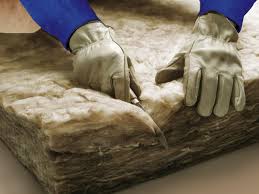Glass wool comes in rolls that can simply be unrolled between joists, making it very easy to install. It has good insulating properties, helping to keep heat in during the winter and heat out during the summer. 3 forms it may come in:
- Blown-in - If you are insulating an attic or
wall cavities, blowing the insulating material will ensure peak
effectiveness. You can also apply it over your existing insulation.
Blown-in fiberglass has an R-value between 2.2 to 2.7 per inch.
- Batts - Fiberglass batts are ideal
for placement between framing during construction in floors, walls,
attics, and ceilings. The R-value can reach up to 4.3 per inch.
- Rolls - These can be cut beforehand
to fit between studs and joists, making them exceptional for attics and
floors. They also have a R-value of up to 4.3 per inch.
R-values tell you how well a type of insulator prevents
the transfer of heat. Simply put the higher the R-value, the better the
material will insulate.
Fire Resistance
Made from recycled glass and sand, glass wool is a natural fire retardant that poses little to no fire hazard. There’s also glass wool materials that are treated with a fire retardant to improve the level of safety.
Energy
Efficiency
During the manufacture process, about 70-80% of the glass wool is produced from recycled glass. Glass wool is resistant to insects. On average, glass wool can help reduce heating and cooling bills by 40% to 50%. In addition to energy savings, it can also help with noise reduction. Although glass wool has a satisfactory R-value if it’s not professionally installed, it can lose thermal protection over time.





Comments
Post a Comment